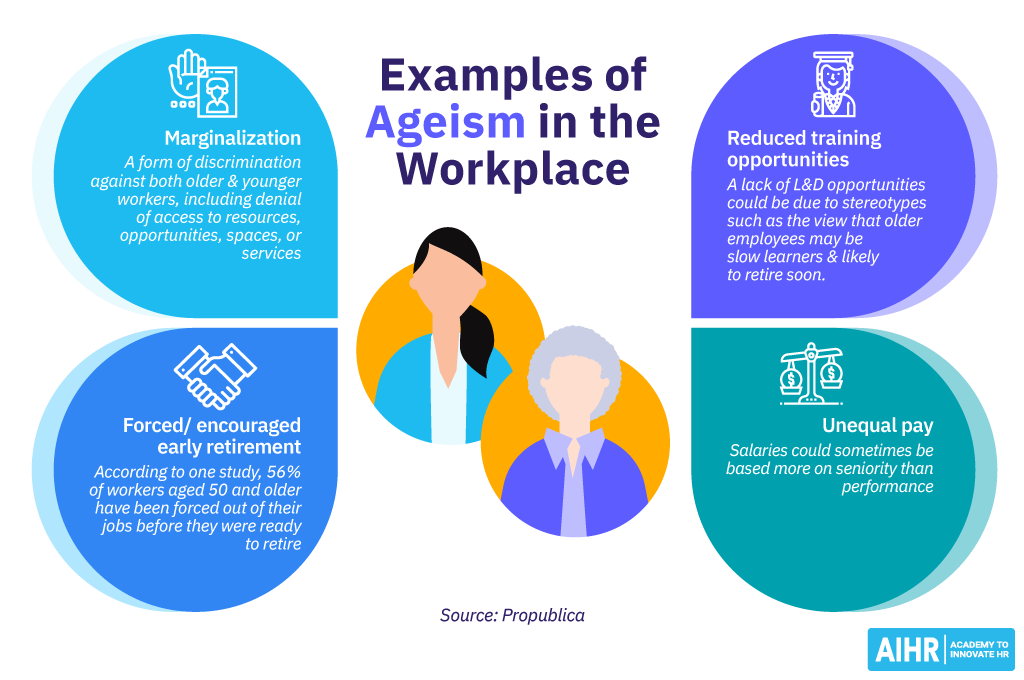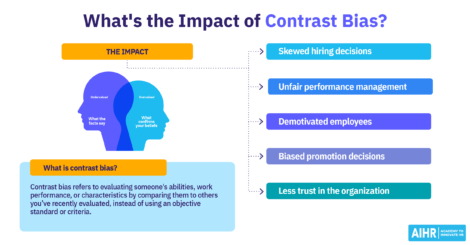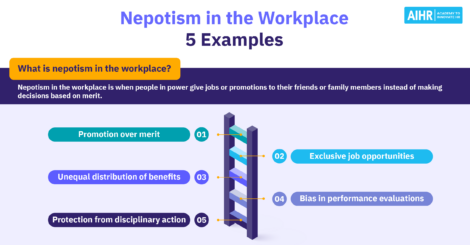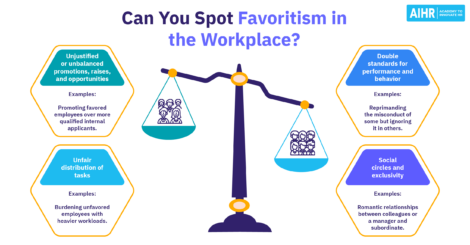What is Ageism? 10 Examples of Ageism in the Workplace

Whether you’ve been in the workforce for a while or recently joined, chances are you’ve encountered or witnessed instances or examples of ageism. In fact, a survey by AARP revealed that 62% of older employees have faced age discrimination, and a Harris Poll found that 36% of Gen Z and younger millennial workers reported experiencing age-based discrimination at work.
In this article, we’ll delve into ageism in the workplace, exploring 10 examples to help HR professionals detect it within their organization. We’ll also provide practical tips on preventing age discrimination.
Contents
What is ageism (in the workplace)?
Why is it essential to address ageism in the workplace?
Age Discrimination in Employment Act
10 Examples of ageism in the workplace
How can HR address ageism in the workplace?
What is ageism (in the workplace)?
Ageism is the discrimination of people based on their age. While ageism is more common among older workers, younger employees experience it, too, and this is called reverse ageism.
Age discrimination in the workplace often has its roots in stereotypes about and age bias against, for example, employees aged 55 and over. Some common age assumptions include:
- Older employees are stubborn
- They take more sick days
- They don’t know how to work with technology, and;
- They are slow.
Additionally, ageist stereotypes of younger employees could include:
- Younger employees are lazy
- They are less reliable
- They are unmotivated, and;
- They are arrogant.
Why is it essential to address ageism in the workplace?
It is important to address ageism in the workplace for several reasons. Let’s explain this from three perspectives: of society, economy, and organizations:
Society and economy
The exclusion of skilled older people from the workforce is not only detrimental to the economy but also a pressing issue that demands attention. With people living longer than ever before, many retirees will spend more time out of work than in their entire careers. This poses significant challenges, particularly from a pension perspective.
Moreover, as the boomer generation continues to retire, we face a potential loss of highly skilled and experienced workers, resulting in significant skills gaps. The impact of ageism cannot be understated.
Studies have consistently shown its negative effects on both physical and mental health, leading to a shorter lifespan and a diminished quality of life. It is imperative that we address ageism and create an inclusive society for people of all ages.
Organizations
As mentioned, ageism left unaddressed in the workplace not only harms the wellbeing of employees, but also stifles their ability to offer valuable insights and perspectives, regardless of age. This, in turn, hinders innovation and knowledge-sharing throughout the organization.
This could also negatively impact the employer branding should employees voice dissatisfaction with a lack of inclusivity. Failing to tackle ageism in the workplace could also lead to potential legal repercussions if an employee decides to take legal action for discrimination.
“Employers need to start by including age as the fifth pillar of diversity and inclusion. They need to measure activities by age, like gender, race, and sexual orientation. Most will be horrified at the results, especially employee engagement.”

Age Discrimination in Employment Act
Let’s dive into the legal consequences and explore how individuals are safeguarded against age discrimination by the law. In the United States, these protections are outlined in the Age Discrimination in Employment Act of 1967 (ADEA).
In a nutshell, the ADEA is designed to protect applicants and employees who are 40 years of age and older from discrimination based on their age in various aspects including:
- Hiring
- Promotion
- Discharge
- Compensation
- Terms, conditions, or privileges of employment.
Interestingly, ADEA does not extend its protection to workers who are under the age of 40. However, some states have laws in place to safeguard younger employees from age discrimination.
To ensure these regulations are upheld, the ADEA is enforced by the Equal Employment Opportunity Commission.
10 Examples of ageism in the workplace
In this section, we will look at various examples of ageism in the workplace – both against younger and older employees. What shape or form can ageism take, and what are the signs to look out for?
1. Hiring and promoting bias
Ageism in the context of hiring and promoting bias refers to discriminatory practices that favor or disfavor individuals based on their age when making employment decisions, such as hiring for new positions or promoting employees to higher roles within an organization. This form of ageism can affect both younger and older individuals.
For example, while younger workers may bring a fresh perspective and a willingness to try new things, this doesn’t mean that older employees don’t. Or that they cannot also offer valuable insights and contribute to the organization’s success.
The opposite is also true. While younger employees may be less experienced and change jobs more often than older employees, this does not mean they cannot be great candidates for that managerial position.
Example of hiring bias
Last year, Lilly USA, LLC, a pharmaceutical corporation based in Indiana, violated federal law by intentionally failing to hire older workers based on their age, according to the EEOC.
Lily’s workforce was initially composed of older workers. To create a more age-balanced workforce, the company intentionally started hiring more millennials and under-hiring more senior candidates. This, in the eyes of the EEOC, violated the Age Discrimination in Employment Act.
Example of promoting bias
According to a Visier Insights research report that explores the role of age in the Tech industry, the frequency of people being promoted in tech declines rapidly after age 36. The same report also found that the average age for tech workers is 38, compared to 43 for non-tech workers, and that the average age for managers in tech is 42, compared to 47 for non-tech managers.
2. Marginalization
Marginalization is a discriminatory practice that affects both younger and older workers. It involves exclusion from meetings, denial of resources, limited access to opportunities, spaces, or services, and more. Essentially, it pushes employees to the sidelines of the company, rendering their contributions undervalued. One common motive behind marginalizing older employees is to coerce them into leaving the organization of their own accord.
Examples of marginalization
In the workplace, marginalization can manifest in different ways.
Some examples include:
- Excluding employees from important meetings, such as discussions about the organization’s future strategy
- Assigning tasks that don’t challenge employees’ skills and talents
- Placing individuals in roles that no longer leverage their strengths
- Disregarding ideas and suggestions
- Reducing people’s participation in decision-making.
3. Stereotyping
Ageism in the context of stereotyping refers to the unfair and prejudiced generalizations, beliefs, and assumptions that are made about individuals based on their age. Stereotypes can lead to discriminatory behaviors, limited opportunities, and unequal treatment.
A theoretical example of stereotyping
Juan-Carlos is in his mid-20s and works in a large financial institution. His team members constantly remind him of the fact that he is the youngest of the team by saying things like ‘you’re probably too young to know this,’ and dismissing his ideas as ‘rookie optimism.’ He’s also ‘jokingly’ being asked to get the team’s lunch every day since he’s the youngest person there.
After a few months, Juan-Carlos has lost his enthusiasm for the role, stopped sharing ideas and speaking up during meetings, and is actively looking for a position elsewhere.
4. Reduced training opportunities
Unfortunately, older employees are often overlooked when it comes to training programs. Only 24% of adults aged 55-65 participate in job-related training, according to PIAAC data across OECD countries. In contrast, 41% of adults aged 45-54 take part in such programs.
This lack of learning and development opportunities stems from stereotypes perpetuated about older workers. Assumptions, such as older employees being slow, resistant to learning, or on the verge of retirement, contribute to this disparity.
However, it’s not just older employees who face these challenges. Younger workers also bear the burden of stereotypes, such as being disorganized, lacking conscientiousness, or lacking motivation. Consequently, they often miss out on valuable training opportunities.
Example of lack of training opportunities
Ageism is unfortunately prevalent when it comes to limiting training opportunities for older employees. Victoria Tomlinson, the CEO of Next-Up and an advocate for Unretirement, shared a compelling example.
Victoria conducted extensive research on investing in advanced IT skills for the 50+ generation in the construction sector. Shockingly, 87% of respondents did not consider it necessary to provide training on these skills for their older workers, despite these individuals being responsible for managing and supervising younger employees.
5. Unequal pay
Unequal pay often hits younger workers the hardest. This can be seen when salaries are often determined by seniority rather than performance, or starting salaries and benefits packages tend to favor older employees, even if they lack the necessary experience for the job.
Example of unequal pay
A small employer in Northern Ireland fired a young worker to avoid increasing her pay to the required national minimum wage rate when she reached 18. This decision was judged by the industrial tribunal as ‘callous’ and as age discrimination.
6. Microaggressions
Microaggressions are indirect, often unintentional, expressions of prejudice. While many people may not even be aware that they’re doing this, these microaggressions can make people feel undervalued, excluded, or even harassed.
Microaggressions are the opposite of microaffirmations: little things anyone can do to make others feel respected, valued, and included. The latter is, in fact, a great antidote to the former.
Examples of microaggressions
The examples of ageist microaggressions are countless, especially since many of them can seem harmless. Here’s a sample of what they may look like for younger employees:
- ‘Are you in our graduate program?’
- ‘Are you the intern?’
- ‘It’s this classic theory. You probably haven’t heard of it.’
- ‘That candidate was great. I’m just not sure people will take them seriously.’
Here is a sample of what microaggressions may look like for older employees:
- ‘There’s this new tool, you probably haven’t heard about it.’
- ‘We might not want to give this project to Bill as he may have trouble working with our new platform.’
- ‘We’re looking at this new trend. You may not know it.’
- ‘Ok, Boomer!’
7. Forced (or encouraged) retirement
Put simply, forced or mandatory retirement is the involuntary job termination of an older worker. This can happen during a broader company restructuring or downsizing or due to an employee’s poor health.
In the US, forced retirement is prohibited by law in most cases. In reality, though, 56% of workers aged 50 and older have been pushed out of their jobs before they actually wanted to retire, according to a 2018 study.
A theoretical example of encouraged retirement
John is a highly experienced engineer in his late 60s who has been working at a manufacturing company for over three decades. He has consistently demonstrated exceptional skills and knowledge in his field, and he enjoys his work. However, the company’s management is looking to reduce labor costs and bring in younger, lower-paid employees.
To achieve this, the company’s management devises a strategy to encourage older employees like John to retire early. They offer an early retirement package that includes financial incentives such as a lump-sum payment and continued healthcare coverage.
The company’s management also starts gradually reducing John’s responsibilities, removing him from high-impact projects, and reallocating his tasks to younger engineers.
8. Negative language
Negative language is distinct from microaggressions. While microaggressions are often unintentional and may unknowingly cause harm or offense, they do not necessarily fall under the category of negative language.
However, the use of negative language such as ‘naive,’ ‘old,’ ‘rookie,’ ‘senile,’ ‘backward,’ and the like is unequivocally ageist. While individuals may not always realize the impact of their words, there is no denying the harm they can cause.
As individuals, we need to keep challenging our own perceptions of age. I am 67 and want to work another 30 years – with a 100-year life, this is no longer weird or unusual. The Queen worked until three days before she died at 96.”

Examples of negative language
Negative language doesn’t necessarily have to be as harsh as some of the words mentioned above. It can also look like ‘Asset-Rich Baby Boomers’ or ‘Disadvantaged, Lazy Millennials.’ Or, even simpler, it can be that tiny phrase at the end of a job advert: ‘Older workers need not apply’.
9. Lack of career development
Ageism in career development manifests in various ways. One form is when organizations favor younger, less qualified employees for promotion, disregarding older, experienced workers.
Conversely, some companies promote experienced older employees, neglecting younger workers brimming with potential.
Additionally, dismissing the ideas of younger employees and the experience of senior staff is another way ageism prevails. Consequently, these employees often find themselves overlooked when it comes to assigning new and challenging projects.
A theoretical example of a lack of career development
On paper, Sally, who is in her late forties, is the perfect candidate to lead a challenging new project that is about to start later this year. Her manager, however, decides to give the project lead to Aisha, who is in her early thirties, saying he wants to ‘lighten the load’ for Sally.
10. Rebranding roles
Rebranding roles in the workplace is a prime example of ageism that occurs all too often. It involves older employees being informed that their position is being phased out, only for the company to then bring in a younger individual to essentially carry out the same responsibilities, albeit under a different title.
Example of rebranding roles
Earlier this year, J&M Industries Inc., a manufacturing and distribution company based in the US, was sued by the EEOC for age discrimination. According to the EEOC, J&M violated federal law when they fired an employee because of her age after she refused to retire when she turned 65 years old.
The employee’s manager had repeatedly asked her when she would retire, and once she told the company that she wasn’t, they informed her that her position was being eliminated due to economic uncertainty. Less than a month later, the company hired a man in his thirties for the same position the company claimed to have eliminated.
How can HR address ageism in the workplace?
Recognizing ageism in the workplace is just the beginning. Taking proactive steps to prevent it is key. In this section, we will provide five tips for HR professionals to effectively combat ageism within their organization:
- Raise awareness: Foster a culture where individuals are mindful of ageist behaviors. Offer training sessions to educate employees on ageism and how to identify it.
- Review HR processes: Assess your hiring procedures to ensure age bias is not infiltrating your organization. Identify areas where improvements can be made.
- Educate managers: Managers play a vital role in leading by example. Equip them with the knowledge and skills to recognize and address ageist behaviors within their teams.
- Embrace reverse mentoring: Launch a reverse mentorship program to create a mutually beneficial learning experience between older and younger employees. Encourage them to learn from each other and challenge age biases.
- Establish a go-to person: Clearly communicate to all employees who they can approach if they encounter ageism and are uncomfortable discussing it with their immediate manager.
“Employers also need to focus on intergenerational working – we already have four or five generations in the workforce, soon it will be six or seven. Get it right, and the benefits are huge, including filling the current skills shortages.”

Key takeaways
Discovering and addressing our internal biases and stereotypes is crucial. Ageism in the workplace is prevalent, but the good news is that awareness empowers us to take action. HR practitioners have a pivotal role in fostering ageism-free environments.
Weekly update
Stay up-to-date with the latest news, trends, and resources in HR
Learn more
Related articles
Are you ready for the future of HR?
Learn modern and relevant HR skills, online













